|
Books Should Be Free Loyal Books Free Public Domain Audiobooks & eBook Downloads |
|
|
Books Should Be Free Loyal Books Free Public Domain Audiobooks & eBook Downloads |
|
Fiction |
|---|
|
Book type:
Sort by:
View by:
|
By: Jules Verne (1828-1905) | |
|---|---|
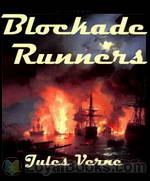 The Blockade Runners
The Blockade Runners
Writing at the end of the American Civil War, Verne weaves this story of a Scottish merchant who, in desperation at the interruption of the flow of Southern cotton due to the Union blockade, determines to build his own fast ship and run guns to the Confederates in exchange for the cotton piling up unsold on their wharves. His simple plan becomes complicated by two passengers who board his new ship under false pretenses in order to carry out a rescue mission, one which Capt. Playfair adopts as his own cause. This is going make the Rebels in Charleston rather unhappy with him.Sure, his new ship is fast - but can it escape the cannonballs of both North and South? | |
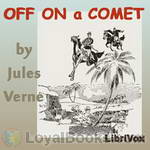 Off on a Comet
Off on a Comet
The story starts with a comet that touches the Earth in its flight and collects a few small chunks of it. Some forty people of various nations and ages are condemned to a two-year-long journey on the comet. They form a mini-society and cope with the hostile environment of the comet (mostly the cold). The size of the 'comet' is about 2300 kilometers in diameter - far larger than any comet or asteroid that actually exists. | |
 Journey to the Centre of the Earth
Journey to the Centre of the Earth
The story involves a German professor (Otto Lidenbrock in the original French, Professor Von Hardwigg in the most common English translation) who believes there are volcanic tubes going toward the center of the Earth. He, his nephew Axel (Harry), and their guide Hans encounter many adventures, including prehistoric animals and natural hazards, eventually coming to the surface again in southern Italy. | |
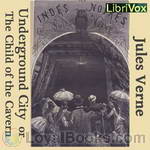 The Underground City or The Child of the Cavern
The Underground City or The Child of the Cavern
Covering a time span of over ten years, this novel follows the fortunes of the mining community of Aberfoyle near Stirling, Scotland. Receiving a letter from an old colleague, mining engineer James Starr sets off for the old Aberfoyle mine, thought to have been mined out ten years earlier. Starr finds mine overman Simon Ford and his family living in a cottage deep inside the mine; he is astonished to find that Ford has made a discovery of the presence of a large vein of coal. Accompanying Simon Ford are his wife, Madge, and adult son, Harry. | |
 Doctor Ox's Experiment
Doctor Ox's Experiment
An early, light-hearted short story, published in 1872 by Jules Verne. It takes place in the Flemish town of Quiquendone, where life moves at an extraordinarily tranquil pace. Doctor Ox has offered to light the town with a new gas, but actually has other plans in place. | |
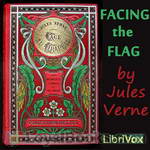 Facing the Flag
Facing the Flag
Like The Begum's Millions, which Verne published in 1879, it has the theme of France and the entire world threatened by a super-weapon (what would now be called a weapon of mass destruction) with the threat finally overcome through the force of French patriotism. | |
 Topsy-Turvy
Topsy-Turvy
Topsy Turvy is a translation of Sans dessus dessous (1889) . This anonymous translation was first published by J. G. Ogilvie (New York, 1890). We meet our old friends Barbicane and J.T. Maston from “Earth to the Moon” who now give us their own approach to the topic of “global warming”. Although they are searching for coal and not oil, readers will find that the auction of the Arctic energy reserves has a definite 21st century ring. | |
 All Around the Moon
All Around the Moon
| |
 The Secret of the Island
The Secret of the Island
| |
 Robur the Conqueror
Robur the Conqueror
| |
 Dick Sand A Captain at Fifteen
Dick Sand A Captain at Fifteen
| |
 A Voyage in a Balloon (1852)
A Voyage in a Balloon (1852)
| |
 The Waif of the "Cynthia"
The Waif of the "Cynthia"
| |
 The Survivors of the Chancellor, diary of J.R. Kazallon, passenger
The Survivors of the Chancellor, diary of J.R. Kazallon, passenger
| |
By: Frances Hodgson Burnett (1849-1924) | |
|---|---|
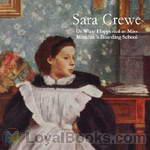 Sara Crewe: or, What Happened at Miss Minchin's Boarding School
Sara Crewe: or, What Happened at Miss Minchin's Boarding School
The story told in Frances Hodgson Burnett’s classic novel, A Little Princess, was first written as a serialized novella, Sara Crewe, or What Happened at Miss Minchin’s, and published in St. Nicholas Magazine, in 1888. It tells the story of Sara Crewe, an intelligent, wealthy, young girl at Miss Minchin’s Select Seminary for Young Ladies. Sara’s fortunes change when her father dies, and she goes from being a show pupil and parlor boarder at the school to a drudge, but eventually she finds happiness and a home again. | |
 The Lost Prince
The Lost Prince
“The Lost Prince” is about Marco Loristan, his father, and his friend, a street urchin named The Rat. Marco’s father, Stefan, is a Samavian patriot working to overthrow the cruel dictatorship in the kingdom of Samavia. Marco and his father, Stefan, come to London where Marco strikes up a friendship with a crippled street urchin known as The Rat. Marco’s father, realizing that two boys are less likely to be noticed, entrusts them with a secret mission to travel across Europe giving the secret sign: ‘The Lamp is lighted... | |
 The Shuttle
The Shuttle
Rosalie Vanderpoel, the daughter of an American multimillionaire marries an impoverished English baronet and goes to live in England. She all but loses contact with her family in America. Years later her younger sister Bettina, beautiful, intelligent and extremely rich, goes to England to find what has happened to her sister. She finds Rosalie shabby and dispirited, cowed by her husband's ill treatment. Bettina sets about to rectify matters. She meets Lord Mount Dunstan, an impoverished earl, who lives nearby and they fall in love, but he cannot speak because it would look as if he were after her money... | |
 Theo
Theo
It's described as "A SPRIGHTLY LOVE STORY" and it is written by F. H. Burnett, "one of the most charming among American writers!" | |
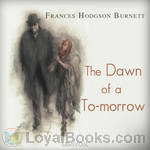 The Dawn of a To-morrow
The Dawn of a To-morrow
A wealthy London business man takes a room in a poor part of the city. He is depressed and has decided to take his life by going the next day to purchase a hand gun he had seen in a pawnshop window. The morning comes with one of those 'memorable fogs' and the adventure he has in it alters his decisions and ultimately his life. | |
 A Lady of Quality
A Lady of Quality
Set in late 1600's England, the story follows the life of a woman living an unconventional life. The loves of her life and all of its ups and downs are included. | |
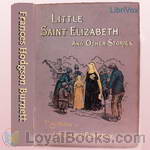 Little Saint Elizabeth and Other Stories
Little Saint Elizabeth and Other Stories
She had not been brought up in America at all. She had been born in France, in a beautiful château, and she had been born heiress to a great fortune, but, nevertheless, just now she felt as if she was very poor, indeed. And yet her home was in one of the most splendid houses in New York. She had a lovely suite of apartments of her own, though she was only eleven years old. She had had her own carriage and a saddle horse, a train of masters, and governesses, and servants, and was regarded by all the children of the neighborhood as a sort of grand and mysterious little princess, whose incomings and outgoings were to be watched with the greatest interest.... | |
 In the Closed Room
In the Closed Room
This is a short story about a shy, quiet little girl living in a big city. When her parents are offered the opportunity to take care of a house in the suburbs for the summer she meets another little girl in the house and they become playmates. (Introduction by Linda Andrus) | |
 Emily Fox-Seton
Emily Fox-Seton
Have you ever wondered what happened to Cinderella after she married the prince? Have you ever asked yourself if it was really "happy ever after?" Actually, in this Victorian melodrama, it's not. 35-years-old Emily Fox-Seton, quite penniless and a little lonely, saves herself from becoming an old maid by agreeing to a marriage proposal from the marquess of Walderhurst, thus becoming "one of the richest Marchionesses in England". She is naïve, kind and good. She doesn't believe that people are really willing to hurt her, but why are all these strange accidents happening?This novel is divided into 2 parts... | |
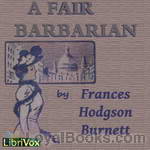 A Fair Barbarian
A Fair Barbarian
The setting is a small English village in the 19th century. When her niece shows up on her doorstep unexpectedly, a quiet spinster finds her life turned upside down. | |
 Robin
Robin
Starting with a summary of the 1922 novel The Head of the House of Coombe, which followed the relationships between a group of pre-WWI English nobles and commoners, this sequel, called Robin, completes the story of Robin, Lord Coombe, Donal and Feather. (Introduction by Linda Andrus) | |
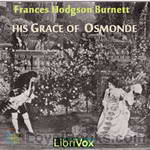 His Grace of Osmonde
His Grace of Osmonde
His Grace of Osmonde, being the portions of that nobleman's life omitted in the relation of his Lady's story presented to the world of fashion under the title of 'A Lady of Quality'Set in late 1600's England, the story follows the life of a woman living an unconventional life. The loves of her life and all of its ups and downs are included. And as above, has more of the story of the Duke who becomes the love of her life. | |
 Racketty-Packetty House
Racketty-Packetty House
| |
 The White People
The White People
| |
 The Head of the House of Coombe
The Head of the House of Coombe
| |
 Esmeralda
Esmeralda
| |
 "Seth"
"Seth"
| |
 That Lass O' Lowrie's 1877
That Lass O' Lowrie's 1877
Frances Hodgson Burnett was born and grew up in Manchester, England, and emigrated to the United States with her family at the age of 16. For her first novels, written in Knoxville, Tennessee and published in New York, she drew upon her knowledge of life and speech of the Lancashire working classes. Set in a Lancashire mining town, That Lass o' Lowries is a gritty, and at times brutal, tale of romance across the classes, which stands in stark contrast to her later work. | |
 Mère Giraud's Little Daughter
Mère Giraud's Little Daughter
| |
 "Le Monsieur de la Petite Dame"
"Le Monsieur de la Petite Dame"
| |
 Lodusky
Lodusky
| |
 "Surly Tim" A Lancashire Story
"Surly Tim" A Lancashire Story
| |
By: Charlotte Brontë (1816-1855) | |
|---|---|
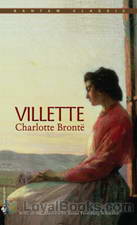 Villette
Villette
Villette was Charlotte Bronte's last published novel. It came out in 1853, just two years before her death in 1855. It is a poignant, strangely lonely and sad work, steeped in conflict between society's demands and personal desires. Set in the fictional town of Villette in France, it is the story of the young and intelligent Lucy Snowe, the narrator in the book. She is described by another character in the book as having “no beauty...no attractive accomplishments...” and strangely seems to lack a personal history or living relatives... | |
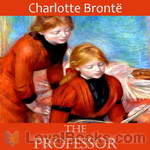 The Professor
The Professor
The book tells the story of a young man named William Crimsworth. It describes his maturation, his loves and his eventual career as a professor at an all-girls’ school. | |
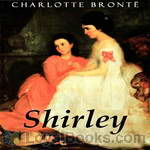 Shirley
Shirley
Shirley is an 1849 social novel by the English novelist Charlotte Brontë. It was Brontë's second published novel after Jane Eyre (originally published under Brontë's pseudonym Currer Bell). The novel is set in Yorkshire in the period 1811–1812, during the industrial depression resulting from the Napoleonic Wars and the War of 1812. The novel is set against a backdrop of the Luddite uprisings in the Yorkshire textile industry. | |
By: Robert Louis Stevenson (1850-1894) | |
|---|---|
 Kidnapped
Kidnapped
Kidnapped is the story of a 16-year old young man who is searching for his true birthright and is determined to make a fortune after the death of his parents. This timeless tale by Robert Louis Stevenson follows the life of David Balfour who leaves his home in Scotland after the death of his parents. First he meets his uncle for the first time in his life. His uncle is a very mean person who, at first, tried to kill David by devious means but then got him kidnapped onto a slave ship. In the ship, David makes friends with a Scottish rebel and together they successfully defeat the ship’s crew... | |
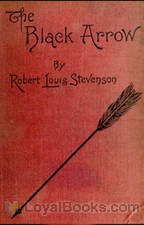 The Black Arrow; a Tale of Two Roses
The Black Arrow; a Tale of Two Roses
The Black Arrow tells the story of Richard (Dick) Shelton during the Wars of the Roses: how he becomes a knight, rescues his lady Joanna Sedley, and obtains justice for the murder of his father, Sir Harry Shelton. Outlaws in Tunstall Forest organized by Ellis Duckworth, whose weapon and calling card is a black arrow, cause Dick to suspect that his guardian Sir Daniel Brackley and his retainers are responsible for his father’s murder. Dick’s suspicions are enough to turn Sir Daniel against him, so he has no recourse but to escape from Sir Daniel and join the outlaws of the Black Arrow against him... | |
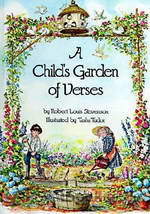 A Child's Garden of Verses
A Child's Garden of Verses
Beloved by many generations of children, A Child’s Garden of Verses is a beautiful collection of children’s poetry. Sometimes thoughtful, sometimes whimsical, but always fun. | |
 The Wrong Box
The Wrong Box
The Wrong Box is a comedy about the ending of a tontine (a tontine is an arrangement whereby a number of young people subscribe to a fund which is then closed and invested until all but one of the subscribers have died. That last subscriber then receives the whole of the proceeds). The story involves the last two such survivors and their relations, a train crash, missing uncles, surplus dead bodies and innocent bystanders. A farce really. | |
 Olalla
Olalla
“Olalla” was a “shilling shocker” written for the Christmas season in 1885, just before the publication of Stevenson’s Dr. Jekyll and Mr. Hyde. The nameless protagonist of this Gothic tale, a wounded soldier, goes to the Spanish countryside to recuperate. He finds himself enthralled by the beautiful Olalla, the daughter of his hostess, whose family conceals a terrible secret. | |
 Essays of Robert Louis Stevenson
Essays of Robert Louis Stevenson
“Extreme busyness…is a symptom of deficient vitality; and a faculty for idleness implies a catholic appetite and a strong sense of personal identity.” What comforting words for the idle among us! Like many of the best essayists, Stevenson is very much the genial fireside companion: opinionated, but never malicious; a marvellous practitioner of the inclusive monologue. In this collection of nine pieces he discusses the art of appreciating unattractive scenery, traces the complex social life of dogs, and meditates in several essays upon the experience of reading literature and writing it... | |
 Master of Ballantrae
Master of Ballantrae
| |
 In the South Seas
In the South Seas
| |
 Island Nights' Entertainments
Island Nights' Entertainments
A marvelous depiction of two sides of South Sea Islands' life through three separate tales. One, the experience of the incoming British keen to live free and exploit the innocent; the other the supernatural as perceived by Stevenson working in the lives of the natives. One tale carries the germ of the story of Madame Butterfly, since become a part of Western culture. Another is an extraordinary retelling of a German horror story transposed to a South Sea Island setting. The last is an effort of the pure Stevensonian imagination and there can be nothing better. | |
 Fables
Fables
| |
 Across the Plains
Across the Plains
| |
 Tales and Fantasies
Tales and Fantasies
| |
 Inland Voyage
Inland Voyage
As a young man, Stevenson wished to be financially independent and began his literary career by writing travelogues. This is his first published work, written at a time when travel for pleasure was still a rarity. He and a friend traveled by canoe through France and Belgium and he relates how they were thrown in jail, mistaken for traveling salesmen and became embroiled in gypsy life. | |
 Prince Otto, a Romance
Prince Otto, a Romance
| |
 Stories By English Authors: France
Stories By English Authors: France
| |
 The Silverado Squatters
The Silverado Squatters
| |
 Weir of Hermiston
Weir of Hermiston
| |
 St. Ives, Being the Adventures of a French Prisoner in England
St. Ives, Being the Adventures of a French Prisoner in England
| |
 The Waif Woman
The Waif Woman
| |
By: Bram Stoker | |
|---|---|
 The Jewel of Seven Stars
The Jewel of Seven Stars
The Jewel of Seven Stars (also published under the name: The Jewel of the Seven Stars) is a horror novel by Bram Stoker first published in 1903. The story is about an archaeologist’s plot to revive Queen Tera, an ancient Egyptian mummy. | |
 Dracula's Guest and other Weird Tales
Dracula's Guest and other Weird Tales
Nine Gothic Horror Tales by the author of Dracula. Note : These tales are not for the squeamish!!! 0r a dark windy night. | |